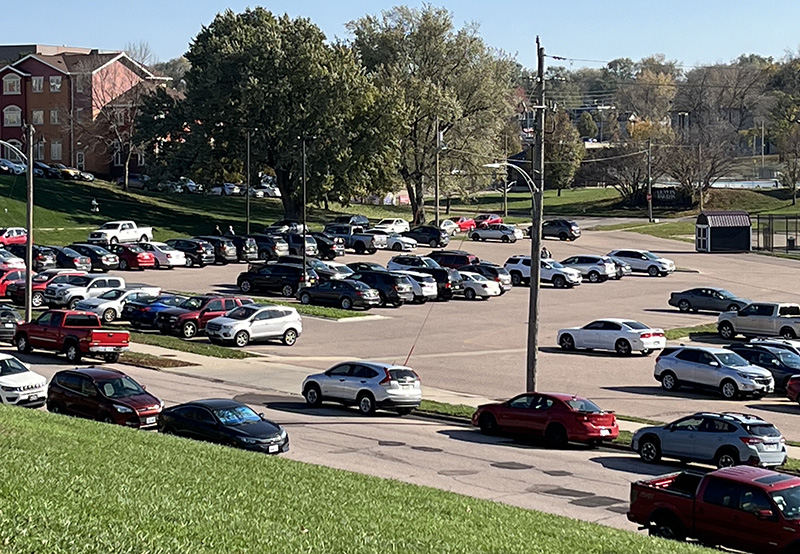by Diego Setton–Sioux city is clearly designed for cars, but is there any real alternative for those who aren’t able to afford one?
“Living in Sioux City is difficult as it’s a city made for cars and everywhere you need to go is 5 to 10 minutes driving, but it takes an hour to walk,” said Maron Guimaraes, a sophomore from Brazil. “Calling for an Uber can be expensive so if you don’t have a car you’re screwed.”
So what other options are there for students who don’t own a car?
Not many it seems. Sioux City, like other cities in the US, has close to zero alternatives to driving, and it doesn’t seem like that’s going to change anytime soon. This car–centered society comes as a shock to many international students around campus, who are not used to being so dependent on only one way of traversal.
Oliver Melander, a senior from Sweden, said, “When I first arrived in Sioux City it marked the first time in my life where I felt totally dependent on having access to a car. At no point before had I ever struggled to get around. Got to get downtown? Take the bus. Meeting up with friends in a different town? Catch a train. Get to school? Bike there. Nothing had ever felt too far away.”
The roots of the problem are more complicated than they appear, as they can be traced back to the way the United States was built as a society. Cars always came first. Walking and public transportation were left as a second thought instead of being a priority for the American lifestyle.
That makes it way harder for students who don’t own cars… Sometimes to the point where it can affect mental health and social life, as pointed out by Melander:
“During my first year living in a city designed for cars I felt isolated, not only geographically but as much socially. Having access to a car was essential in order to meet up with friends, to attend social gatherings or events. Designing a city for cars rather than public transport or non–fuel dependent transportation prompts social segregation by making social mobility a monetary, and subsequently also class, issue. It shapes social interaction and construct in ways that needs to be acknowledged and compensated for within such a community.”
The search for solutions also leads nowhere, as buses barely pass by campus. The city has no infrastructure for other forms of transportation.
Enzo Tagliati, a junior from Sweden, said Sioux City was a big shock, mentioning that even when he searched for alternatives, he couldn’t quite find a solution. “I remember my freshmen year I would often try to bike somewhere, just for the side walk to suddenly end and I would find myself biking in a highway with cars going at fifty miles per hour right next to me,” he explained. “It really made me feel stuck as I couldn’t get anywhere if I didn’t know any people that had cars and it really made me feel limited about what I could do in my free time”.










Leave a Reply